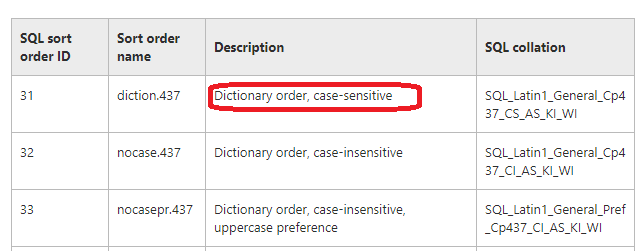Microsoft Querying Microsoft SQL Server 2012/2014 70-461 Exam Practice Test
You administer a database that includes a table named Customers that contains more than 750 rows. You create a new column named PartitionNumber of the int type in the table.
You need to assign a PartitionNumber for each record in the Customers table. You also need to ensure that the PartitionNumber satisfies the following conditions:
* Always starts with 1.
* Starts again from 1 after it reaches 100.
Which Transact-SQL statement should you use?
Note: This question is part of a series of questions that use the same set of answer choices. An
answer choice may be correct for more than one question in the series.
You develop a database for a travel application. You create a view that displays details of events and
attractions. The names of the event and attractions are sorted alphabetically.
You need to sort the names in a case-sensitive, dictionary order.
What should you do?
Answer : D
This topic describes SQL Server 2008 collation options for instances of SQL Server that require compatibility with versions of SQL Server that do not use collations.
The following SQL collations are listed on the Collation Settings page of the SQL Server Installation Wizard.

References: https://msdn.microsoft.com/it-it/library/ms144250(v=sql.105).aspx
You need to build a table structure for a stored procedure to support data entry from a website form. The website form must meet the following requirements:

Which two actions should you perform? Each correct answer presents part of the solution.
Answer : D, E
SYSDATETIMEOFFSET returns a datetimeoffset(7) value that contains the date and time of the computer on which the instance of SQL Server is running.
ISDATE returns 1 if the expression is a valid date, time, or datetime value; otherwise, 0.
References:https://msdn.microsoft.com/en-us/library/bb677334.aspx
You are a database developer at an independent software vendor. You create stored procedures that contain proprietary code.
You need to protect the code from being viewed by your customers.
Which stored procedure option should you use?
You are maintaining a Microsoft SQL Server database. You run the following query:

You observe performance issues when you run the query. You capture the following query execution plan:

You need to ensure that the query performs returns the results as quickly as possible.
Which action should you perform?
Answer : A
Cost is 53% for the Table Scan on the Person (p) table. This table scan is on the ID column, so we should put an index on it.
You administer a Microsoft SQL Server 2012 database that includes a table named Products. The Products table has columns named ProductId, ProductName, and CreatedDateTime.
The table contains a unique constraint on the combination of ProductName and CreatedDateTime.
You need to modify the Products table to meet the following requirements:
Remove all duplicates of the Products table based on the ProductName column.
Retain only the newest Products row.
Which Transact-SQL query should you use?
Answer : B
You use Microsoft SQL Server 2012 to develop a database application.
You create a stored procedure named DeleteJobCandidate.
You need to ensure that if DeleteJobCandidate encounters an error, the execution of the stored procedure reports the error number.
Which Transact-SQL statement should you use?